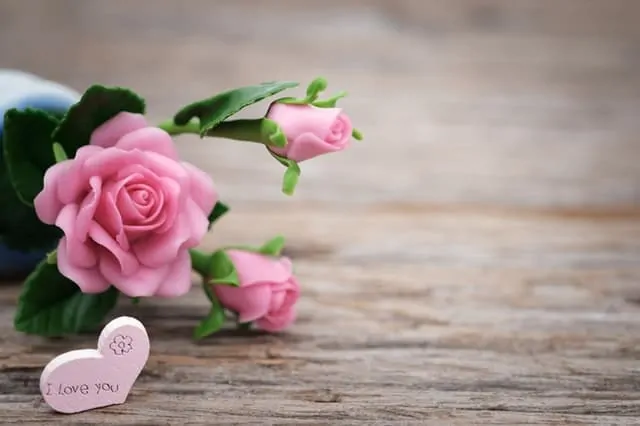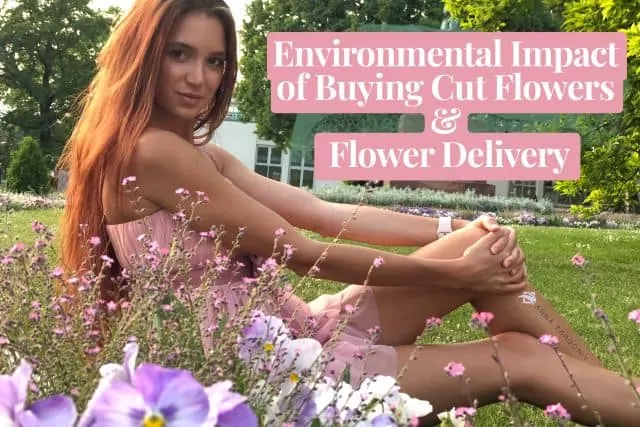Environmental Impact of Buying Cut Flowers & Flower Delivery
Table of Contents
The fame of the cut-flower industry was always a mystery for me. Even when I was a child, I always asked myself, “If you love flowers, why do you kill them, put them in a vase, and look at how they are slowly dying?”
Also, it always looked like a waste of time and money for me.
I stopped to accept cut-flowers a long time ago, and I informed everybody that if they really want to gift me flowers, they can buy me potted ones from local farms because it hurts me to see them dying.
Although I stopped to accept this kind of flower a long time ago, only this Valentine’s day, I began wondering how this industry affects our planet. I mean, I have farmers in my family, and I, for a fact know how much time and effort it takes to grow them.
There is no way you can grow that many flowers that fast, sell them that cheap, and keep them alive without nasty pesticides! After I did my research, I was horrified!
Now, I want to spread this information as much as I can.
So please, take your time to read my article and share this information with others!
How Transportation and Cut-Flowers and Cheap Roses Negatively Affects the Planet

Most cut-flowers come to the United States from countries with all year warm climates and low labor costs like Ecuador, Kenya, Ethiopia, and Columbia. Due to that, the way they are transported is one of the biggest problems in this industry.
According to the Washington Post, in 2017, Columbia alone shipped over 4 billion flowers to the United States.
American customers’ thirst for cheap flowers resulted in the expansion of the free-trade agreement between the United States and Columbia, which expanded cocaine trafficking.
In 2018, on Valentine’s Day alone, 15,000 tons of flowers were shipped only from Ecuador!
All these flowers are shipped on giant cargo planes, and according to VOX, to transport these flowers costs approximately 114 million liters of fuel, emitting about 360,000 metric tons of carbon dioxide into the atmosphere!
If you think that transportation ends at this point – think twice! After flowers come from a cargo plane, they are transported on refrigerated delivery trucks.
Most of you think that flowers are transported in water, but it’s a myth. They are transported in a mix of oxygen and CO2.
Refrigerated trucks consume about 25% more fuel compared to regular ones, as well as they are driven by diesel fuel, which is more harmful to the environment compared to gasoline.
And this problem is all around the world. According to the Guardian, in 2005, 19,000 tons of flowers were imported into the UK from Kenya, which racked up to 33,000 tons of CO2 emission.
Each year this industry becomes bigger, so now think about how huge these numbers are today in the age of Instagram and Facebook, and then think that it’s all happening around the world every single day!
If you think that’s bad, don’t forget about all the pollution caused by plastic wrappers and other plastic products which come with this industry as well!
Chemical Pollution, Health Impacts, and Unfair-Wages
Of course, none of the organic flowers can grow that fast to be profitable for greedy consumers. To make flowers grow more quickly and protect them from insects, industries use a lot of pesticides, which end up in water, air, killing workers, and cause people who hold them at home allergies and respiratory problems.
Let’s talk about each topic separately.
While doing my research, I came across a National Wildlife Federation article about cut-flowers and pesticides, where it was stated that growing cut-flowers uses extreme amounts of highly toxic dangerous chemicals, including the ones which cause cancer. Because of it, the U.S. and foreign workers are overexposed to pesticides during planting, growing, transporting, and selling cut-flowers, as well flowers still carry significant amounts of pesticides when they are sold to the customer. According to a draft analysis by an environmental group that tested roses sold in 1998 by retailers,
“There are no limits on the amount of pesticide residues on these plants,” says Richard Wiles, vice president for research at the Environmental Working Group, which sponsored the tests. The result is a highly toxic workplace and a highly toxic rose.”
Pesticides cause asthma, allergic reactions, congenital disabilities, respiratory problems, cancer, and more!
Richard Wiles’ group analyzed eight flower samples which they purchased from a retail or by phone. For their analysis, they chose commonly purchased flowers since growers usually heavily use chemicals on them. They detected a dozen different pesticides, including two listed by the Environmental Protection Agency as probable carcinogens.
Among these pesticides was iprodione at a level 50 times higher than the amount allowed in food. Iprodione has been shown to cause cancer in rats.
In 1995 study by Lori Ann Thrupp, who contributed research on pesticides for the World Resource Institute, it was found that Ecuador male farmworkers wore masks to protect them from pesticides’ harm, but women did not wear any protection, and they frequently complained of dizziness and nausea. Women were usually the youngest and lowest-paid workers in the greenhouses. Thrupp as well stated that,
“The smell alone was an indication of the high levels, and workers were being exposed to this on a daily basis.”
Potted Flowers – Good or Bad?
Whether potted flowers are good or bad is a debatable question.
According to The Guardian, most of the potted flowers come the same way as cut-flowers, again mostly from Kenia, Ethiopia, and Columbia. So there is almost no difference in what you are purchasing.
There still is an impact on the environment, as well as by this you are sponsoring unfair-trade!
Solution for Flower Lovers and Environment Enthusiasts!
According to Peter Moran, executive vice president of the Society of American Florists, flowers which are grown under his control are safe, follow all ethical rules, and most of the workers are florists for generations and learned it from their families. Also, they follow all pesticide norms and safety rules.
For potted flowers, The Guardian suggested,
“look for certification – the Fairtrade logo is on a number of flowers – or there’s Florverde, an eco-certification program for flowers from Colombia. Check baseline standards and suppliers at ethicaltrade.org.”
The best way to buy flowers and help the environment is to support local farmers! By purchasing flowers from local farms, you are helping the bee population and helping to make more food for birds and insects, which helps to recover our ecosystem!
It is worth to mention that its great for our soil and helps recover ozone holes!
Concluding Thoughts – The Impacts of Flower Delivery Services and Buying Cut Flowers
As you can see, the “blooming” of the cut-flower industry is burning our planet alive, and we are the only ones to stop it. Purchasing cut-flowers is an investment in poor health for anybody who came in contact with these flowers, unfair-wages, environmental pollution, and carbon emission.
By purchasing slowly grown flowers, you are saving our planet and make everybody who comes in contact with these flowers happy! Make your choices wisely!
Read Next: Fast Fashion Brands to Avoid

